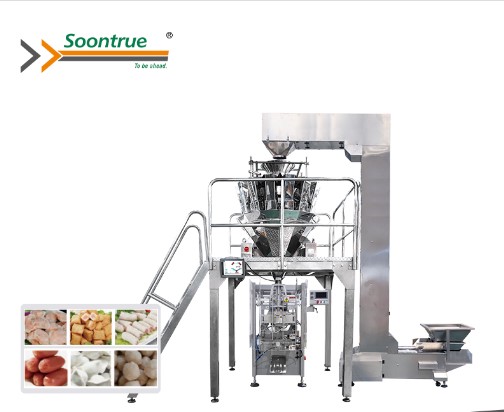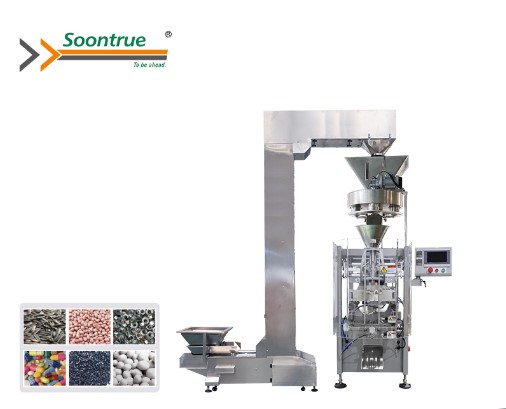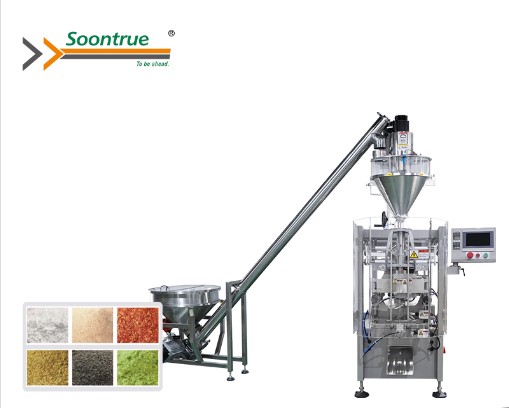Features To Consider When Buying A Vertical Packing Machines
In the world of modern manufacturing and packaging, vertical packing machines have become a vital piece of equipment. They provide efficiency, precision, and versatility, making them a popular choice in a variety of sectors. Whether you are in the food, pharmaceutical, chemical, or other industries that require efficient packaging solutions, choosing the correct vertical packing machine is critical. This article explores the key features to consider when buying a vertical packing machine to ensure it meets your specific needs and enhances your operational efficiency.
Understanding Vertical Packing Machines
Before diving into the specific features, it's essential to have a basic understanding of what vertical packing machines are and how they function.
What is a Vertical Packing Machine?
A vertical packing machine, also known as a vertical form-fill-seal (VFFS) machine, is an automated packaging machine used to form, fill, and seal products into bags.These devices are known as "vertical" because the packing material is fed into the machine from the top and the product is distributed vertically. This design is particularly advantageous for efficiently handling a wide range of products, from powders and granules to liquids and solids.
How Do Vertical Packing Machines Work?
Vertical packing machines operate through a series of automated steps:
Film Unwinding: The packaging film is unwound from a roll and fed into the machine.
Bag Formation: The film is formed into a tube by sealing the vertical edges together.
Filling: The product is dispensed into the formed bag through a filling tube.
Sealing: The top and bottom of the bag are sealed to enclose the product.
Cutting: The sealed bag is cut from the rest of the film, creating an individual package.
Understanding these basic operations is essential for recognizing the critical features that impact the machine's performance.
Key Features to Consider
Several features should be considered when investing in a vertical packing machine to ensure it aligns with your production requirements and enhances your packaging process.
Machine Speed and Throughput
Importance of Speed
One of the primary reasons for investing in a vertical packing machine is to increase packaging efficiency. Therefore, the speed of the machine is a crucial factor. Machine speed, often measured in bags per minute (BPM), determines how quickly the machine can form, fill, and seal packages.
Assessing Your Needs
Evaluate your production requirements to determine the appropriate speed. High-speed machines are ideal for large-scale operations, while moderate-speed machines may be sufficient for smaller production runs. Ensure that the machine can meet your peak production demands without sacrificing quality.
Flexibility and Versatility
Product Range
Consider the range of products you need to package. A versatile vertical packing machine should accommodate various product types, including powders, granules, liquids, and solids. Some machines have interchangeable filling mechanisms, which allow you to effortlessly transition between different product types.
Bag Sizes and Styles
Flexibility in bag sizes and styles is another important consideration. Look for machines that can handle a variety of bag dimensions and types, such as pillow bags, gusseted bags, and block-bottom bags. This versatility enables you to meet diverse packaging needs and adapt to changing market demands.
Material Compatibility
Packaging Materials
The compatibility of the machine with different packaging materials is critical. Vertical packing machines should be able to work with a range of films, including polyethylene (PE), polypropylene (PP), laminated films, and biodegradable materials. Ensure that the machine can handle the specific materials used in your packaging process.
Seal Integrity
Seal integrity is essential for maintaining product quality and extending shelf life. Look for equipment with dependable sealing mechanisms, such as heat sealing, ultrasonic sealing, or impulse sealing. The type of sealing should match the packaging material to ensure consistent and secure seals.
Ease of Operation and Maintenance
User-Friendly Interface
A user-friendly interface simplifies machine operation and reduces the learning curve for operators. Look for machines with intuitive touchscreen controls, easy-to-navigate menus, and programmable settings. Advanced features like recipe storage allow you to save and recall specific packaging parameters, enhancing efficiency.
Maintenance Requirements
Regular maintenance is necessary to keep the machine running smoothly. Consider machines that are designed for easy access to components, simplifying routine maintenance tasks. Features like tool-less changeovers and self-diagnostic capabilities can significantly reduce downtime and maintenance costs.
Accuracy and Precision
Weighing and Filling Accuracy
Accurate weighing and filling are essential to avoid product wastage and ensure consistent package weight. Choose machines equipped with high-precision weighing and filling systems, such as multi-head weighers or auger fillers. These systems should offer adjustable settings to accommodate different product densities and fill volumes.
Consistent Sealing
Consistent sealing is crucial for product protection and presentation. Ensure that the machine provides uniform sealing pressure and temperature control to achieve high-quality seals. Advanced machines frequently include automatic modifications to provide consistent sealing settings.
Durability and Build Quality
Robust Construction
Investing in a vertical packing machine is a significant expenditure, so durability and build quality are paramount. Look for machines constructed from high-quality materials, such as stainless steel, which is resistant to corrosion and wear. Robust construction ensures longevity and reduces the likelihood of frequent breakdowns.
Warranty and Support
Consider the manufacturer's warranty and support services. A comprehensive warranty provides peace of mind, while reliable customer support ensures that any issues are promptly addressed. Evaluate the availability of spare parts and the manufacturer's reputation for after-sales service.
Integration and Automation
Compatibility with Existing Systems
If you have an existing production line, consider how well the new vertical packing machine will integrate with your current equipment. Compatibility with existing conveyors, feeders, and other machinery is essential for seamless operation.
Automation Capabilities
Modern vertical packing machines often come with advanced automation features, such as automatic film splicing, product feeding, and bag handling. Automation eliminates the need for manual intervention, improves efficiency, and lowers human error. Evaluate the level of automation that best meets your production needs.
Cost Considerations
Initial Investment
The initial cost of the machine is a significant consideration. While it is essential to stay within budget, avoid compromising on critical features that impact performance and longevity. Balance cost with the machine's capabilities and potential return on investment.
Operating Costs
Consider the long-term operating costs of the machine, including energy consumption, maintenance, and consumables. Energy-efficient machines can reduce operational expenses, while machines with low maintenance requirements minimize downtime and associated costs.
Conclusion
Selecting the right vertical packing machine requires thoroughly evaluating various features to ensure it meets your needs and enhances your packaging process.If you are looking for a trusted vertical packing machine supplier, look no further than Soontrue! We have more than 30 years of experience in producing food packing machines including vertical packing machines. For more information, please feel free to visit our site today!





